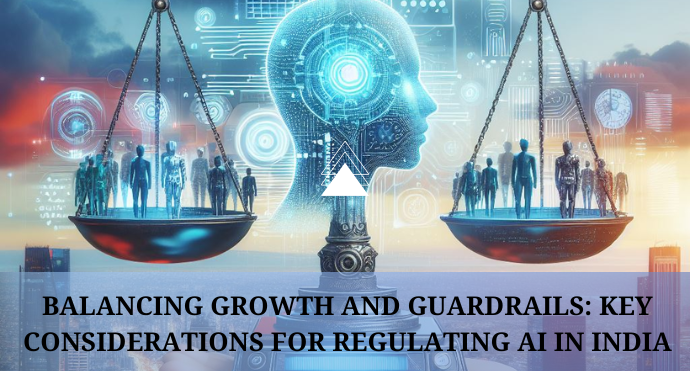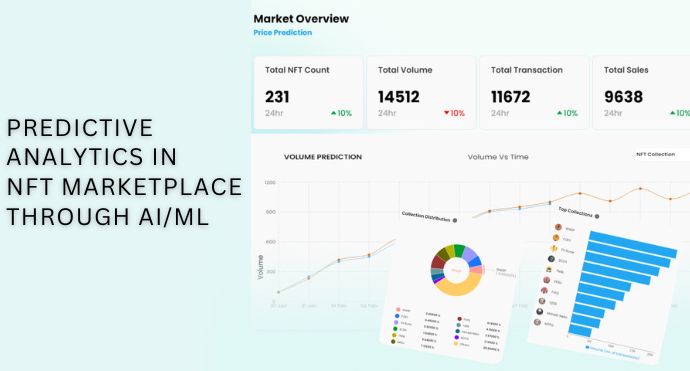India’s journey with Artificial Intelligence (AI) is exciting, promising immense potential for economic growth and societal advancement. From healthcare diagnostics to personalized education, AI is poised to revolutionize every sector. However, this rapid progress demands a cautious approach, one that balances innovation with safeguards. Regulating AI effectively is no easy feat, but it’s crucial to ensure its benefits truly reach everyone, and potential harms are mitigated.
Why Regulate AI?
While AI promises leaps and bounds, concerns linger. Algorithmic bias, data privacy violations, and lack of transparency in decision-making processes are just some of the potential pitfalls. Unregulated AI could exacerbate existing inequalities, stifle responsible innovation, and erode public trust.
Data Dilemma:
- 71% of Indians are concerned about their data privacy in the age of AI.
- India, with over 1 billion smartphone users, sits on a mountain of data, attracting both ethical and unethical players.
- Robust data protection laws, like the recently passed Digital Personal Data Protection Act 2023, are essential to prevent misuse and build trust.
Bias in the Machine:
- AI algorithms trained on biased data can perpetuate discriminatory practices in areas like loan approvals or facial recognition.
- A 2021 Accenture report found that 81% of CEOs are concerned about potential bias in AI-powered decisions.
- Ensuring diversity in data and development teams, coupled with regular audits and transparency about algorithms, is vital to eliminate bias.
Transparency and Explainability:
- Black-box algorithms, where even developers struggle to understand their inner workings, raise concerns about accountability and fairness.
- Making AI systems more transparent and explainable allows for identifying and addressing potential problems before they cause harm.
- Initiatives like explainable AI (XAI) research and public education on AI’s limitations are crucial steps towards building trust.
Finding the Sweet Spot:
Regulating AI effectively requires a risk-based approach. High-risk applications in healthcare or law enforcement merit stricter regulations, while low-risk ones, like chatbots, can have looser restrictions. This balance fosters innovation while protecting vulnerable populations.
The Way Forward:
- Building AI capacity: Upskilling government officials, industry professionals, and citizens to understand AI’s benefits and risks is crucial.
- Collaborative approach: Open dialogue and cooperation between government, industry, academia, and civil society are essential for formulating effective regulations.
- Learning from global best practices: Studying frameworks like the EU’s AI Act can provide valuable insights for India’s approach.
Regulating AI is not about stifling progress, but about ensuring it benefits everyone fairly and responsibly. By addressing the challenges and finding the right balance, India can unlock the true potential of AI for a brighter, more equitable future.
Benefits of Responsible AI Regulation:
- Economic Growth: AI can fuel the rise of new industries and create millions of jobs, boosting India’s GDP.
- Improved Public Services: AI-powered healthcare, education, and social welfare programs can significantly enhance service delivery and reach remote areas.
- Empowered Citizens: AI can personalize learning, enhance accessibility, and provide tools for better decision-making at individual and community levels.
- Global Leadership: By building a safe and ethical AI ecosystem, India can establish itself as a leader in responsible AI development and deployment.
Remember, AI is a powerful tool, and like any tool, it needs the right guardrails to be used for good. By embracing responsible AI regulation, India can unlock its immense potential and create a future where everyone benefits from its transformative power.
Conclusion: A Symphony of Innovation and Responsibility
India’s AI journey stands at a critical juncture. The path forward demands a delicate dance – a waltz between the vibrant innovation fueled by AI and the steady rhythm of responsible regulation. We must embrace the immense potential of this technology while diligently building the guardrails that ensure its benefits reach all corners of society.
The challenges are real – data privacy concerns, algorithmic bias, and the opacity of black-box systems. But so are the solutions. Through a risk-based framework, collaborative approach, and continuous learning from global best practices, we can build a robust regulatory environment that fosters responsible AI development.
Regulating AI is not about stifling progress; it’s about creating a symphony of innovation and responsibility. By ensuring inclusivity, fairness, and transparency, we can unlock the true potential of AI for a brighter, more equitable future for India. Let us not shy away from this crucial task, for the well-being of our nation and the world rests on our ability to navigate this digital crossroads with wisdom and foresight.
This conclusion emphasizes the importance of finding the right balance between innovation and responsibility while highlighting the benefits of building a robust regulatory environment for AI in India. It also uses the metaphor of a “symphony” to leave a lasting impression of harmony and collaboration.



